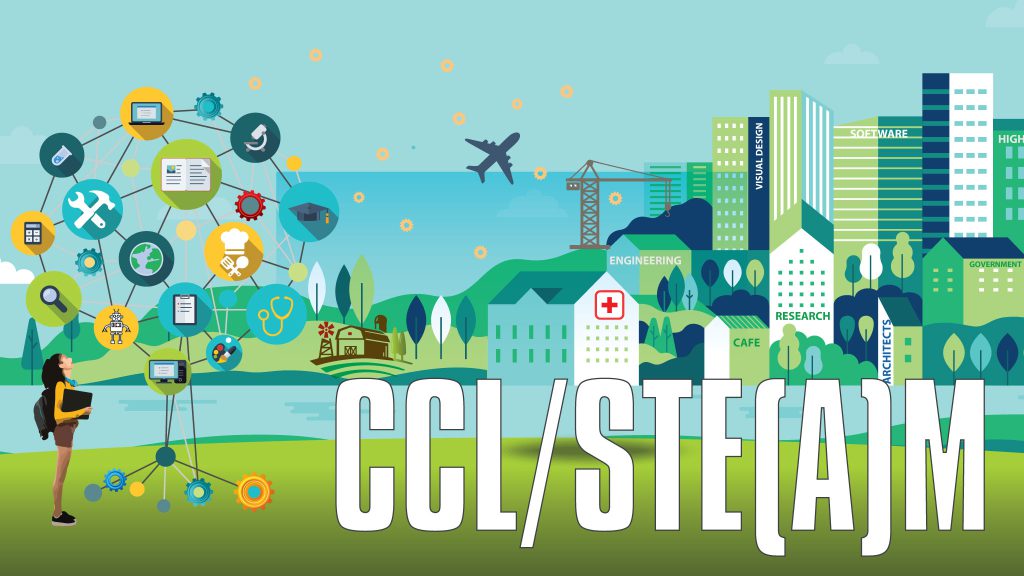Inspire, Educate, Employ.
SOESD provides innovative STE(A)M Hub learning opportunities in collaboration with business and industry partners that motivate students through project-based learning in the classroom, after-school programs, and summer camps.
The STE(A)M Hub initiative leverages, coordinates, and supports relationships with stakeholders in K-12, higher education, business, industry, and community to bring rigor, relevance, and authentic learning experiences to students in pre-school through post-secondary education.
Efforts to coordinate college and career related learning experiences for educators, community partners, students and their families are supported by STE(A)M Hub. Examples include developing advanced and dual credit opportunities at various high schools, supporting Career Technical Education (CTE) programs of study, and facilitating high quality STEAM (Science, Technology, Engineering, Arts, and Mathematics) activities such as summer camps, robotics or innovation competitions, and after-school programs. STE(A)M Hub leverages substantial grant funding, volunteer involvement, and other in-kind resources to provide these service offerings.
KEY TERMS:
Science, Technology, Engineering, Arts, Math (STEAM)
STEAM is embedded in everything we do. When we talk about STEAM, we are talking about intentional focus on recognizing and developing STEAM-related components in everything.
Career Connected Learning (CCL)
CCL refers to hands-on learning, usually tied to a specific career pathway. Examples of CCL are internships, CTE classes, and the Bus Project.

 CONTACT
CONTACT